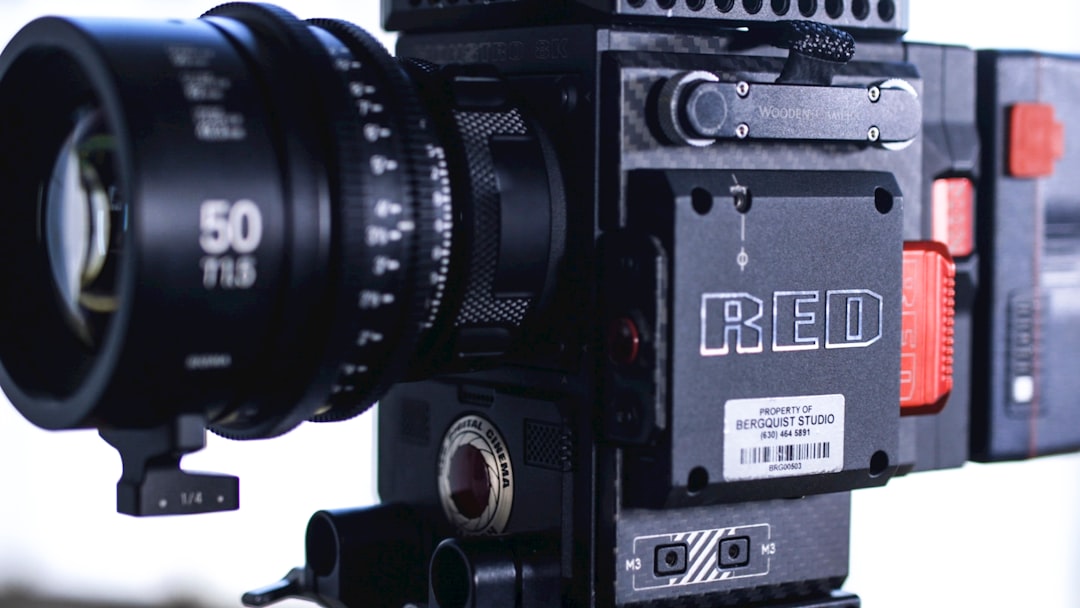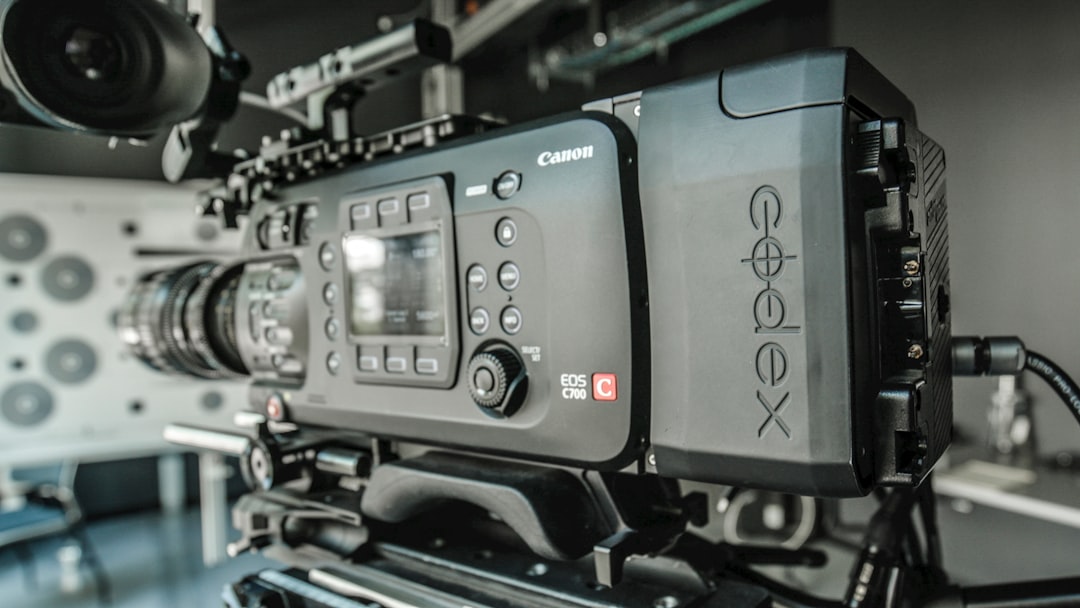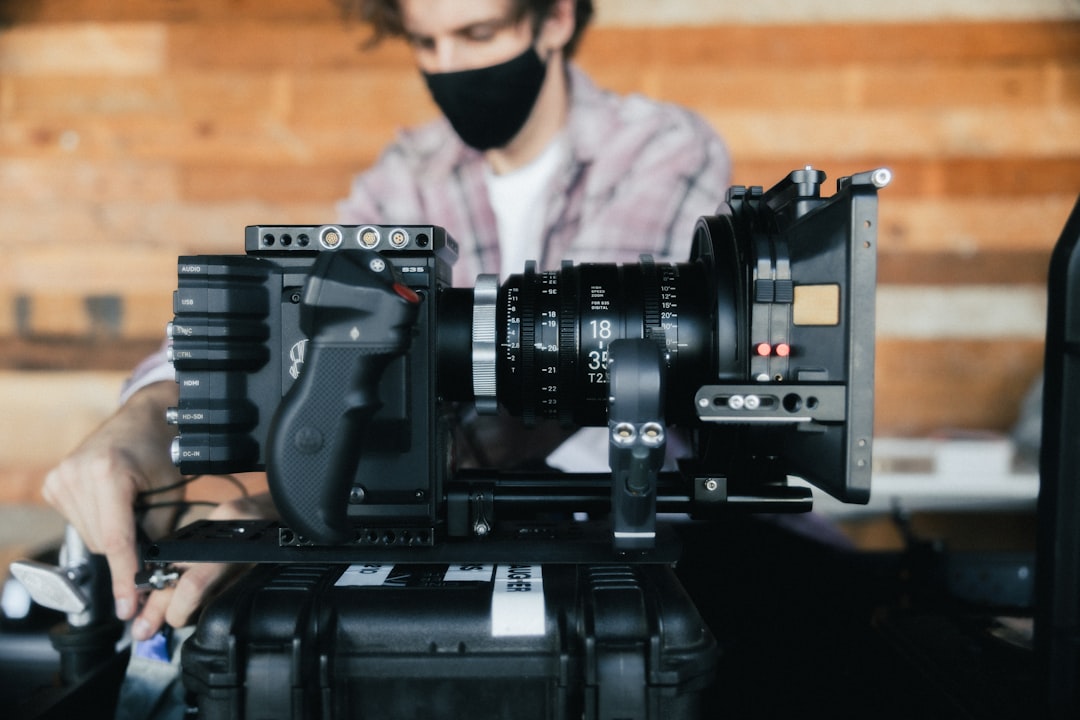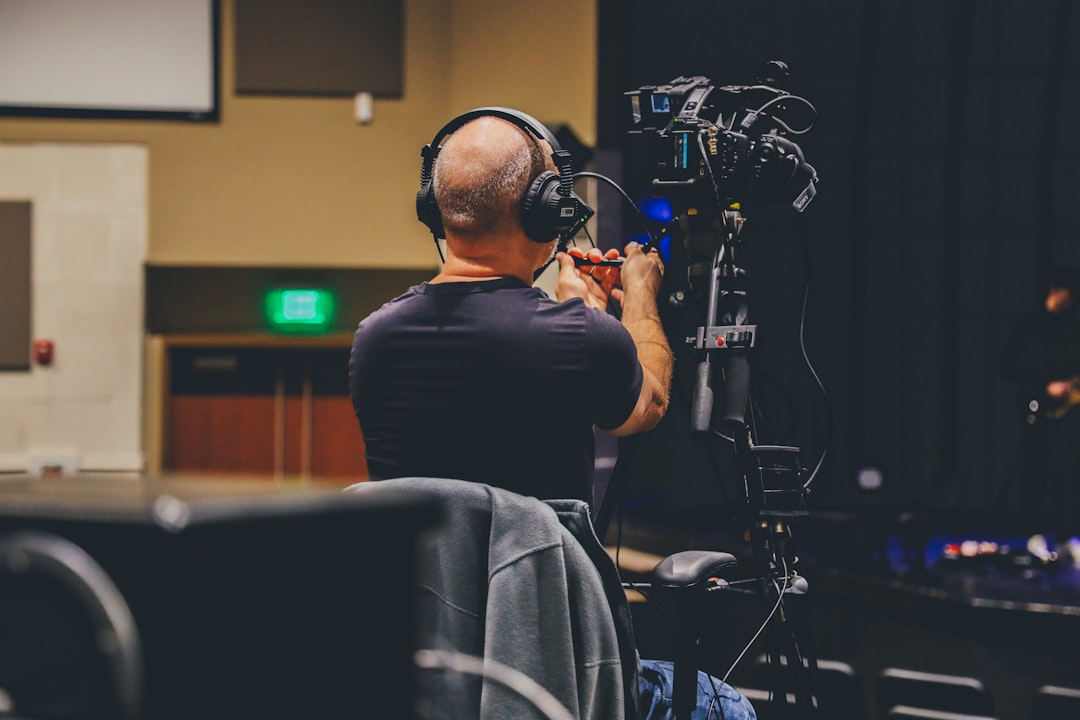

Engage prospects with a scan and streamline customer engagement with FREE QR code marketing tools by Sona – no strings attached!
Create a Free QR CodeFree consultation

No commitment

Engage prospects with a scan and streamline customer engagement with FREE QR code marketing tools by Sona – no strings attached!
Create a Free QR CodeFree consultation

No commitment
QR codes have become a strategic powerhouse for bridging offline engagement with online action. For training video production companies, QR codes in marketing represent an effective way to connect printed assets, in-person interactions, or physical deliverables to interactive digital experiences. This solution addresses a core frustration: traditional materials like brochures or business cards rarely become trackable leads or actionable insights, leaving valuable prospects untracked or unengaged.
Training video production companies face unique challenges converting offline interest into qualified leads or nurturing prospects through their consideration journey. Missed opportunities occur when potential buyers pick up collateral at events or scan packaging but never submit a form or reach out. Too often, high-value prospects remain anonymous, and interest stays unmeasured. Thoughtful use of QR codes provides a way to attribute engagement, surface buyer signals, and ensure no interaction goes unnoticed, transforming invisible touchpoints into tracked lead generation opportunities.
Leveraging QR solutions allows training video production companies to systematically address lead loss, enrich audience data, and close gaps in visibility. The result is higher-quality lead collection, more interactive portfolio showcases, and teams equipped to act on engagement wherever it happens. Through smarter campaign attribution and real-time insights into buyer interest, companies can focus resources where they are most likely to convert.

QR codes bridge the gap between offline and online engagement, enabling training video production companies to turn physical assets and in-person interactions into structured digital journeys, as seen in QR video examples.
Replacing analog processes with QR-enabled flows makes each moment of attention count. Rather than handing out a printed demo list or collecting paper sign-up sheets at a booth, a scan can send a prospect to a short, mobile-optimized form that instantly syncs into your CRM and triggers a nurture sequence. Instead of relying on memory after a meeting, a QR on a business card can open a personalized showcase page with tailored training samples and a calendar link for booking.
A centralized QR management solution like Sona QR helps automate flows from scan to CRM, ensuring no lead slips through the cracks. When scans sync directly into tools like HubSpot or Salesforce, teams can trigger alerts, assign follow-up tasks, and start personalized nurture sequences without manual data entry.

Printed handouts, pitch decks, and sample USB drives rarely reveal buyer intent or power timely follow-up. Busy operations leaders and L&D executives pick up materials, then move on. Traditional workflows often result in lost demo requests, inconsistent contact capture, and attribution gaps around static links in PDFs or on packaging. These frictions create anonymous key accounts and incomplete data, which limit personalization and slow down cycle time. Improving revenue attribution helps surface the true impact of these touchpoints.
QR codes solve these problems by turning physical moments into interactive gateways. They reduce the number of steps from interest to action and add trackability to materials that were previously opaque. Dynamic codes also keep content fresh long after printing, so your best training reels and case studies are always in front of prospects.
Applying QR codes across key touchpoints helps marketers and sales teams become more data-driven. You can prioritize high-intent accounts, tailor outreach by context, and tighten the loop between initial interest and booked conversations—guided by intent data.
Choosing the right QR format for each campaign ensures a smooth experience and meaningful data capture. Training video production firms typically need to showcase work, collect leads, and accelerate scheduling, so formats should map to those behaviors.
Static codes point to a fixed destination and are best for evergreen assets. Dynamic codes give you detailed analytics, editable destinations, and advanced routing. In most lead-generation scenarios, dynamic codes are the smarter choice because you can optimize content post-launch and centralize tracking across placements.
With Sona QR, you can generate any of these formats and manage them from a single dashboard. For lean teams, consolidating creation, deployment, and analytics reduces complexity and speeds iteration.

Growth comes from activating the offline environments where your best buyers evaluate vendors and training partners. QR placements in these contexts convert anonymous interest into actionable demand, while also revealing which messages and assets resonate.
Prioritize surfaces where time is short and attention is high. Make your calls to action explicit, and always align the QR destination with the context in which it appears. The more specific the experience is to the moment, the higher your conversion rate will be.
Targeted QR placements ensure that every engaged prospect is surfaced quickly for sales or marketing action. Over time, you will know exactly where to invest budget and which placements maximize your scan-to-demo metrics.

QR codes are versatile across the training video buying journey, from early awareness to post-purchase advocacy. The goal is to meet prospects where they are and guide them to the next step with minimal friction.
For teams that juggle events, outbound sales, and content-heavy proposals, QR workflows replace passive touchpoints with measurable interactions. You can collect intent signals at the exact moment curiosity peaks, then push those signals into automated follow-up.
QR workflows ensure sales and marketing teams capture intent signals right as they occur. They also close the loop after delivery by turning satisfied clients into advocates who share feedback and refer peers.
Each scan is a data point that reveals intent, context, and urgency. By deploying unique QR codes across touchpoints, you can automatically segment audiences and target follow-up messages that fit each buyer’s stage and interests.
Training video production companies typically engage multiple personas: heads of learning and development, HR leaders, operations managers, safety officers, and procurement. Segmenting by persona, content consumed, and scan location enables tailored outreach that feels relevant rather than generic.
With Sona QR, each code becomes a smart entry point to your funnel. You capture meaningful context at the source and can retarget based on real behavior, not assumptions.
QR codes act as connective tissue across offline and digital channels. They transform static content into interactive experiences and create a unified view of engagement that was previously fragmented. For training video teams that participate in conferences, field events, and direct mail programs, QR codes unlock a consistent way to measure and optimize performance across media.
The key is to define the role of each channel and match QR destinations to the specific job of that channel. A trade show backdrop should route to a fast-loading highlight reel and a calendar. A proposal insert might link to a budget calculator and a tailored explainer video. Each touchpoint plays its part.
Centralized QR management connects every interaction across channels and feeds performance data to your CRM and analytics tools. That unified view lets you quickly reallocate spend to the highest-performing assets and messages—supported by multi-touch attribution.
Start by defining the business outcome you want from the campaign. Training video production companies typically focus on generating demo requests, booking scoping calls, or progressing in-flight proposals. Pick one clear goal per QR to keep the journey focused and conversion friendly.
Describe your audience and the context in which they will scan. For example, at a safety conference you might use a QR that opens a three-video playlist of compliance training plus a prompt to Book a 20-minute assessment. In a mailer to HR leaders, you might route to a case study, budget ranges, and a calendar link for a hiring enablement workshop.
Choose between static and dynamic codes based on your need for flexibility and analytics. Static codes are fine for evergreen destinations that require no tracking. Dynamic codes are ideal for campaigns where you want detailed data, editable destinations, A/B testing, and retargeting infrastructure.
If your goal is lead capture or attribution, dynamic codes provide significant advantages. They let you update landing pages mid-campaign, rotate content by audience, and unify metrics across channels. For enterprise teams and multi-event calendars, dynamic codes also reduce reprint risk and speed optimization.
Design for clarity and intent. Make the QR large enough to scan from the expected distance, surround it with sufficient white space, and add a short, benefit-driven call to action. Consider brand colors, but maintain strong contrast between the code and background.
Test across multiple devices, operating systems, and lighting conditions. Print proofs at actual size and confirm scannability from realistic angles. Stress-test landing pages for load speed and mobile readability. A well-designed QR and destination experience can boost conversion rates substantially—see this QR tutorial.
Place codes where they will get noticed and used. In high-traffic environments, position codes at eye level with succinct CTAs. On printed materials, ensure codes are on the front or near key takeaways rather than buried inside. Consider using unique codes per placement to isolate performance.
Match the destination to the context of the scan. An event code should load a highlight reel and scheduler fast. A proposal code should deepen trust with relevant proof points. Train staff to point out the code and explain what prospects get for scanning, which increases scan rates in busy settings.
Go beyond counting scans. Track conversion steps like form submissions, demo bookings, and content watched. Use time and location data to understand when and where engagement peaks, then adjust staffing and messaging accordingly. Benchmark metrics by channel and by asset to guide investment.
Iterate continuously. A/B test landing pages, alter CTA language, and refine the content behind the code. Feed insights into your sales cadences and content roadmap. Over a few cycles, you will see a measurable lift in scan-to-lead and lead-to-meeting rates.

Surface true impact by tracking more than scan counts. A complete view connects the initial scan to downstream behaviors and revenue events. For training video production teams, this means showing how QR campaigns contribute to scheduled scoping calls, proposals delivered, and contracts won.
Start by instrumenting your landing pages and forms to capture both identity and context. Use UTM parameters for source and medium. Tie scans to account records when possible. Then, build dashboards that align QR engagement with your sales stages so stakeholders can see progression and ROI clearly.
Analytics-driven QR programs empower teams to refine lead generation and revenue strategies based on actionable buyer intent. Sona QR captures real-world engagement, and Sona.com extends that insight with identity resolution and multi-touch attribution that ties scans to pipeline and closed revenue—see account identification to connect scans to the right buyers.
Scaling success requires consistent execution, clear value propositions, and tight integration with your marketing and sales stack. Focus on simplifying the path to action and making every scan trigger a useful next step for the buyer.
Choose the tactics that match your most common physical media and buyer journey stages. Then reinforce them with training for staff and automation that keeps the conversation going after the scan.
Creative deployment examples that work well in this vertical include QR stickers on instructor guides that drive to facilitator-only resources, and QR codes on post-delivery checklists that invite referrals and testimonials. Both turn routine touchpoints into lead-generating assets.
For training video production companies, QR codes are now a necessity for addressing challenges like anonymous interest, missed lead capture, and unseen engagement signals. Modern QR solutions connect offline moments to online journeys, reveal hidden buyer intent, and enable smarter, data-driven follow-up that accelerates revenue.
QR codes are more than a shortcut; they are a strategy. They transform every physical touchpoint into a digital entry point, turning moments of interest into measurable actions and solving problems like lost high-value prospects, poor attribution, and incomplete account data. With Sona QR, you have everything needed to capture demand at the source, integrate data with your CRM, and convert scans into pipeline and closed-won results.
QR codes have transformed training video production companies from simply delivering content to actively capturing and nurturing leads. By integrating QR codes into your training videos, you unlock a powerful tool for lead generation, client engagement, and real-time feedback—turning passive viewers into qualified prospects ready to take the next step. Imagine instantly knowing which videos resonate most, capturing detailed insights without interrupting the learning experience.
With Sona QR, you can effortlessly create dynamic, trackable QR codes that update instantly without reprinting, allowing you to refine campaigns on the fly and connect every scan directly to your lead database. This seamless integration empowers your team to measure engagement, retarget interested clients, and maximize ROI like never before.
Start for free with Sona QR today and transform every training video into a high-impact lead capture engine.
They often miss opportunities when potential buyers interact with offline materials but do not submit forms or reach out, resulting in anonymous prospects and unmeasured interest.
QR codes connect offline assets like brochures and business cards to interactive digital experiences, enabling trackable journeys, gated content, real-time analytics, and automated CRM integration to convert passive interest into actionable leads.
Common formats include web links to demo reels, lead forms for immediate capture, vCards for contact sharing, app download links, and prefilled SMS or email messages for quick inquiries.
Effective placements include event booths, staff badges, client proposals, instructional packaging, direct mail, digital signage, and printed collateral where attention is high and scanning is convenient.
Dynamic QR codes offer editable destinations, detailed analytics, A/B testing capabilities, and centralized tracking, enabling optimization and flexibility throughout the campaign lifecycle.
They track key metrics such as scan-to-lead conversion rate, demo request completion, time to meeting booked, scan volume by location and time, and pipeline influence to assess ROI and optimize efforts.
Define clear goals and audience context, select appropriate QR code types, design for scannability with clear calls to action, place codes strategically across channels, and track performance for continuous optimization.
Scans sync directly into CRM systems like HubSpot or Salesforce, triggering alerts, assigning follow-up tasks, and starting personalized nurture sequences without manual data entry.
They reduce friction from interest to action, enable real-time tracking of prospect behavior, keep content dynamically updatable, and improve attribution of offline engagements to revenue outcomes.
By deploying unique codes per buyer stage and use case, tagging scan data by persona and context, and syncing with CRM and ad platforms, companies can segment audiences and deliver tailored follow-up messages.
Use Sona QR's trackable codes to improve customer acquisition and engagement today.
Create Your FREE Trackable QR Code in SecondsJoin results-focused teams combining Sona Platform automation with advanced Google Ads strategies to scale lead generation

Connect your existing CRM

Free Account Enrichment

No setup fees
No commitment required

Free consultation

Get a custom Google Ads roadmap for your business






Launch campaigns that generate qualified leads in 30 days or less.
